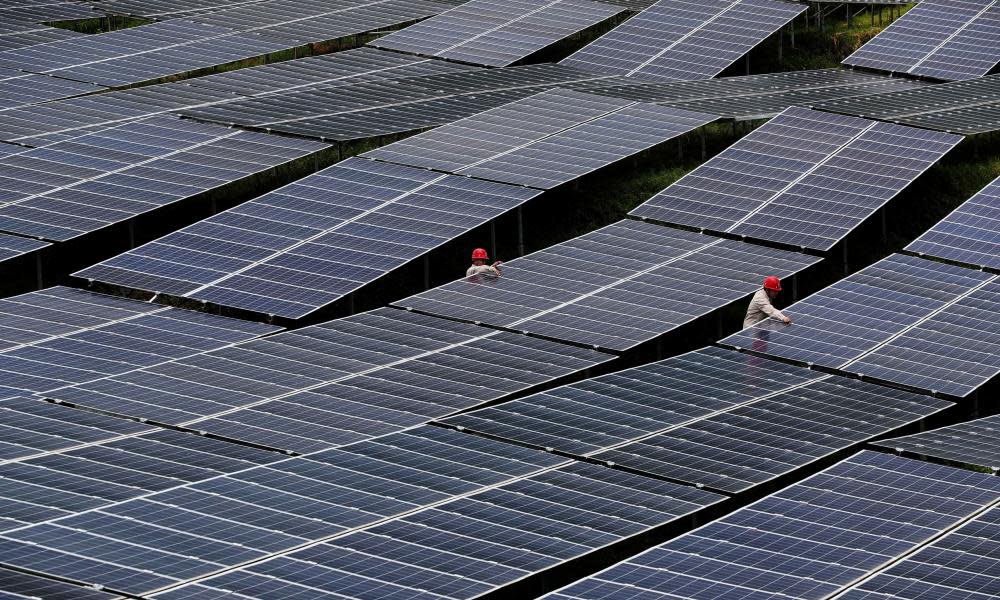Australia could see a solar cell ‘renaissance’ if global supply chain is diversified

Australia could start a solar manufacturing “renaissance” and have a rare opportunity to accelerate its transition to renewable energy if it heeds a call by the International Energy Agency to diversify the world’s solar cell supply chain.
A special report by the agency released on Friday found China controls over 80% of parts of the global photovoltaic (PV) solar supply chain, with one out of every seven panels produced worldwide being manufactured by a single factory.
“This level of concentration in any global supply chain would represent a considerable vulnerability; solar PV is no exception,” the report said.
It estimated diversifying the supply chain could attract US$120bn of new investment in PV solar manufacturing facilities by 2030 and create 1,300 manufacturing jobs for each new gigawatt of production capacity.
But while the agency said solar represents “the most affordable electricity generation technology in many parts of the world” and that global production capacity will be between 500-600GW by the end of 2022, some believe this figure is too low.
Related: Silver lining: Australian researchers given $45m to study alternative solar panel materials
Tim Buckley, the director of the Clean Energy Finance thinktank, said massive new factories being built in China would add new supply to the global market over the next year, keeping global prices low and demand high as fossil fuel prices climb.
For example, Buckley said, China was in the process of finishing an integrated factory capable of churning out 60GW of solar cells and modules each year – roughly the same as all the solar capacity installed in 2015.
“The IEA have understated demand every year for a decade,” Buckley said. “My read is China is going to double the world’s supply of modules in the next 12 to 18 months.”
The IEA report found PV solar has the potential to double the number of manufacturing jobs globally to 1m by 2030, with others in installation and maintenance.
However a labour shortage is slowing the growth of the industry, with the IEA finding one in three installation jobs in Australia – including electricians and installers – were unfilled and at risk of remaining unfilled in 2023.
Dr Mark Dean, a research fellow with the Australia Institute, said the situation was an “indictment” on the previous federal government and it was “imperative” the new Labor government prioritised the energy transition in any future industry policy.
“If we were to see renewable energy and our climate change obligations tackled head on, we could see a renaissance in manufacturing and restore Australia’s place as a leader in renewable energy technology,” he said.
Australia once led the world in developing solar technology but in the early 2000s the industry shifted to China, which has invested US$50bn into solar over the last decade.
Australia currently has only one solar manufacturer, Tindo Solar, which is in the process of expanding its factory.
Prof Alistair Sproul, head of the school of photovoltaic and renewable energy engineering at the University of New South Wales, was involved in the early efforts to set up a local industry.
He said China had been crucial to helping bring down the price but the experience from the pandemic of supply bottlenecks showed it was important to have a basic capacity to build solar panels in Australia.
Though the International Energy Agency report warned setting up PV solar manufacturing in countries like Australia would create more CO2 emissions owing to the country’s continued reliance on coal, Sproul said this issue could be addressed.
“We should be creating renewables with renewables. The idea has been around for a while but now it’s cost-effective, extremely cost-effective,” he said.
Dr Bjorn Sturmberg, the research lead at the Australian National University’s battery storage and grid integration program, said “targeted investments” could support the creation of an industry “if it was deemed a national priority”.
“Manufacturing could harness automation and Australia’s world-leading solar research and innovation,” Sturmberg said. “The efficiencies of scale of Chinese production pose a significant barrier to entry, but there are opportunities for differentiation on what is currently a homogenous low-cost item.”

 Yahoo News
Yahoo News 
